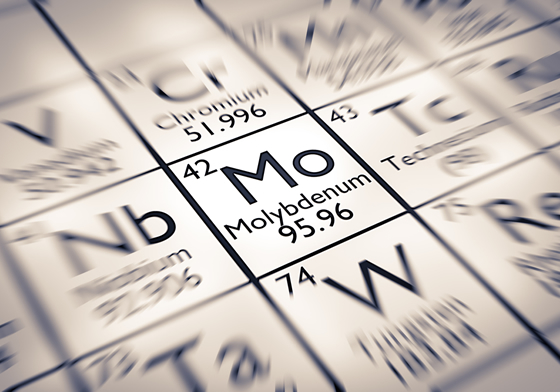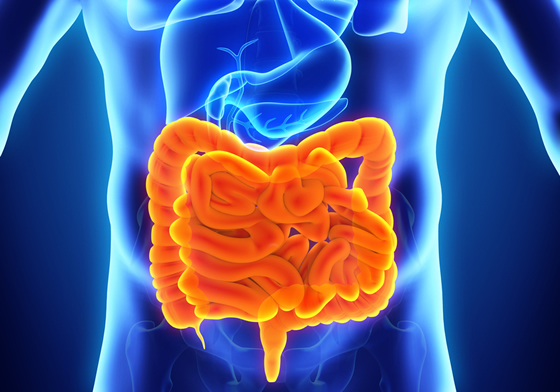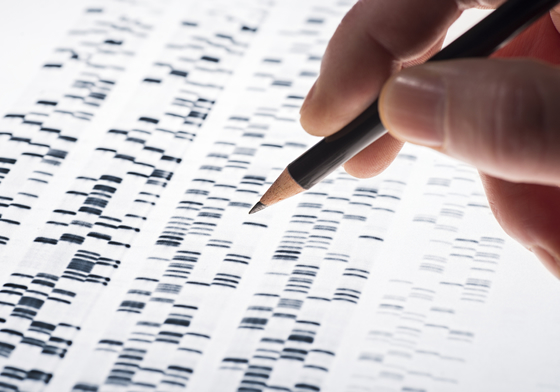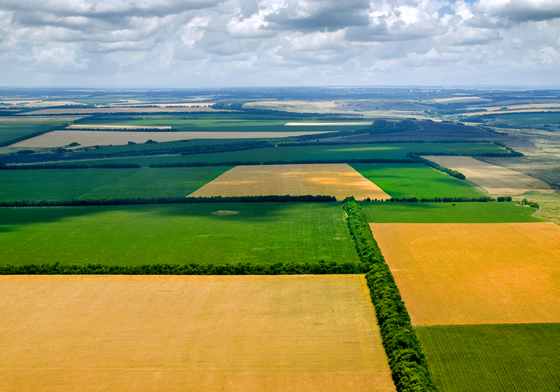Molybdenum is essential
Molybdenum is a naturally occurring element found all around us. It is also found in low concentrations in plants, animals, and within the human body. In common with a handful of other elements - including copper, iron and zinc - molybdenum is also essential, meaning that life cannot be sustained without it.
Click on the arrows in the sliding panel below for more information on the essentiality of molybdenum and how it supports life on earth in a number of ways. Clicking on the ‘+’ expands the text and shows a list of supporting references.
 Enlarge picture
Enlarge picture

Molybdenum is one of the elements in the periodic table known to be essential for life.
An element is considered essential when it is required for growth and function by living ...
An element is considered essential when it is required for growth and function by living organisms. Molybdenum features as one of the elements in the list of essential metals: cobalt, copper, iron, magnesium, manganese, molybdenum, selenium, and zinc.
- Haensch, R., and Mendel, R. R., Physiological functions of mineral micronutrients (Cu, Zn, Mn, Fe, Ni, Mo, B, Cl), Current Opinion in Plant Biology, 2009, 12, 259-266.
- Mendel, R. R., Molybdenum: biological activity and metabolism. Dalton Trans., 2005, 21,3404-9. Epub 2005 Sep 26
- Mendel, R.R., Biology of the molybdenum cofactor, Journal of Experimental Botany, 2007, 58, 2289–2296.
- Nordberg, G., Sandström, B., Becking, G. and Goyer, R.A, Essentiality and toxicity of trace elements: Principles and methods for assessment of risk from human exposure to essential trace elements. J. Trace Elem. Exp. Med., 2000, 13, 141–153
- Spears, J.W., Reevaluation of the metabolic essentiality of the minerals -Asian-Australasian Journal Of Animal Sciences , 1999, 12 ,1002-1008
- Stiefel, E.I., and Murray, H. H., Molybdenum, in .Sarka, B., (ed.), Heavy Metals in the Environment, Marcel Dekker, Inc., New York, Basel, 2002, Chapter 14, pp. 503 to 531.
 Enlarge picture
Enlarge picture

Molybdenum was fundamental to the evolution of life on earth.
During evolution of life on earth, molybdenum played a crucial role in converting inorganic ...
During evolution of life on earth, molybdenum played a crucial role in converting inorganic nitrogen via ammonia to organic nitrogen, amino acids, nucleotides, proteins, DNA and RNA, the molecules of life.
Molybdenum is essential for human, animal and plant life. It is a cofactor for a number of enzymes that catalyze chemical transformations in the global carbon, nitrogen and sulfur cycles. Thus, molybdenum-dependent enzymes are not only required for human health, but also for the health of the entire ecosystem.
- Mathews, C.K. and van Holde, K.E., Biochemistry, Benjamin/Cummings Publishing Company, Inc., 1990:pp. 671 seq., The Nitrogen Cycle; Inorganic Nitrogen Metabolism.
- Schoepp-Cothenet, B., van Lis, R., Philippot, P.,Magalon, A., Russell, M.J., Nitschke, W., The ineluctable requirement for the trans-iron elements molybdenum and/or tungsten in the origin of life., Scientific Reports, 2012, 2, 263.
- Schwarz, G.; and Belaidi, A., Molybdenum in human health and disease, Metal ions in life sciences, 2013, 13,415-4
- Turnlund, J.R., Molybdenum metabolism and requirements in humans, Met Ions Biol Syst., 2002, 39, 727-739.
- Williams, R.J.P. and da Silva, J. J. R. F, Bringing Chemistry to Life – From Matter to Man, Oxford University Press, 1999.
- Williams, R.J.P. and da Silva, J. J. R. F., The involvement of molybdenum in life, Biochemical and Biophysical Research Communications, 2002, 292, 293-299
- Williams, R.J.P. and da Silva, J. J. R. F., The Chemistry of Evolution: The Development of Our Ecosystem, Elsevier, 2006.
 Enlarge picture
Enlarge picture

Molybdenum occurs naturally in water, soil and in our bodies.
Molybdenum is found in combination with sulfur in the mineral molybdenite and with oxygen as ...
Molybdenum is found in combination with sulfur in the mineral molybdenite and with oxygen as naturally occurring molybdate in oceans, rivers and soils. The concentration of molybdenum in the environment is variable, typically a few parts per million.
- Barker, A. V., and eam, D. J., Handbook of Plant Nutrition, CRC Press, 2016.
- Ehmann, W. D., Prevalence of the elements, in Hampel, C. A., The Encyclopedia of the Chemical Elements, Reinholg Book Co., New York, London, Amsterdam, 1968, pp. 567 – 576.
- He, Z. L. L., Yang, X. E., Stoffella, P. J., Trace elements in agroecosystems and impacts on the environment. J. Trace Elem. Med. Biol., 2005, 19, 125.
- Head, P. C., and Burton J. D., Molybdenum in Some Ocean and Estuarine Waters. Journal of the Marine Biological Association of the United Kingdom, 1970, 50, 439-448..
- IMOA, Molybdenum levels in humans, http://www.imoa.info/HSE/environmental_data/human_health/molybdenum_levels_humans.php
- Kaiser, B. N.; Gridley, K. L.; Brady, J. N.; Phillips, H., and Tyerman, S. D., The role of molybdenum in agricultural plant production, Annals of Botany, 2005, 96, 745-754
- Lide, D. R., Handbook of Chemistry and Physics, CRC Press LLC: Boca Raton, FL, 90th edn 2009
- Miller, C. A., Peucker-Ehrenbrink, B., Brett D. Walker, B. D., and, F., Re-assessing the surface cycling of molybdenum and rhenium, Cosmochimica Acta, 2011, 75, 7146–7179.
- Mitchell, P.C.H., The Chemistry and Uses of Molybdenum, in Mitchell, P.C.H. (ed.), Chemistry and Uses of Molybdenum, Proceedings of a Conference Sponsored by Climax Molybdenum Company and the Dalton Division of the Chemical Society, University of Reading, England, 1973, pp. 1-4
- Murray, F. J., Sullivan,F. M., Tiwary, A. K. Carey, S.,90-Day subchronic toxicity study of sodium molybdate dihydrate in rats, Regulatory Toxicology and Pharmacology, 2014, 70, 579–588.
- Oorts, K., Smolders, E., McGrath, S. P., van Gestel, C. A. M., Cornelis, A. M., McLaughlin, M. J., and Carey, S., Derivation of ecological standards for risk assessment of molybdate in soil, Environmental Chemistry, 2016, 13, 168
- Shacklette , H. T, and Boerngen, J. G., Element Concentrations in Soils and Other Surficial Materials of the Coterminous United States, U.S. Geological Survey Professional Paper 1270, 1984, pubs.usgs.gov/pp/1270/pdf/PP1270_508.
- Voynick, S. M., Climax: The History of Colorado's Climax Molybdenum Mine--Mountain Press Pub Co Mountain Press Publishing Company (1996)
 Enlarge picture
Enlarge picture

Molybdenum is essential for human life - we could not function without it.
In humans, molybdenum is an essential constituent of several enzymes which play a vital role in ...
In humans, molybdenum is an essential constituent of several enzymes which play a vital role in bodily processes.
- Schwarz, G.; and Belaidi, A., Molybdenum in human health and disease, Metal ions in life sciences, 2013, 13,415-4
- Turnlund, J.R., Molybdenum metabolism and requirements in humans, Met Ions Biol Syst., 2002, 39, 727-739.
- IMOA, Molybdenum levels in humans
 Enlarge picture
Enlarge picture

Molybdenum plays a critical role in humans, helping to digest food, produce energy and remove waste products from the body.
The ability of the human body to eliminate waste is fundamental to our physical well-being. ...
The ability of the human body to eliminate waste is fundamental to our physical well-being. Molybdenum is an essential constituent of enzymes needed for digestion and excretion.
In humans, molybdenum is needed in enzymes which manage chemical reactions of sulfur and nitrogen compounds in the body, helping to metabolize toxins.
The enzymes are:
Xanthine oxidase, which regulates the production of uric acid. Low dietary molybdenum, and a deficiency or absence of xanthine oxidase can lead to kidney stones and possible renal failure.
Aldehyde oxidase, which in humans is needed for a number of important processes and is thought to be involved in:
- steroid hormone synthesis
- vitamin A metabolism
- maintaining lung function
- maintaining healthy blood circulation
Sulfite oxidase, which is necessary for the metabolism of sulfur amino acids. Without it, in very rare genetic cases, neurological problems can develop.
- Atwal, P. S., and Scaglia, F., Molybdenum cofactor deficiency, Molecular Genetics and Metabolism, 2016, 117, 1 – 4.
- Goldberg, R. N., Tewari, Y. B., and Bhat, T. N., Thermodynamics of enzyme-catalyzed reactions—a database for quantitative biochemistry, Bioinformatics,2004,20, 2874-2877, and references therein.
- Hille, R., Hall, J., and Basu, P., The mononuclear molybdenum enzymes, Chemical Reviews, 2014, 114, 3963-4038.
- Hille, R., Nishino, T., and Bittner, F., Molybdenum enzymes in higher organism, Coordination Chemistry Reviews, 2011, 255, 1179-1205.
- Ichida, K., Amaya, Y., Okamoto, K.,and Nishino, T.,Mutations associated with functional disorder of xanthine oxidoreductase and hereditary xanthinuria in humans, International Journal of Molecular Sciences, 2012, 13, 15475-15495
- IMOA, Molybdenum levels in humans
- Li, J., and Ryde, U., Comparison of the active-site design of molybdenum oxo-transfer enzymes by quantum mechanical calculations, Inorganic Chemistry 2014, 53, 11913-11924.
- Pryde, .D. C. , Dalvie, D., Hu, Q., Jones, P., Obach, R. S., and Tran., T-D., Aldehyde Oxidase: An Enzyme of Emerging Importance in Drug Discovery, J.Med.Chem., 2010, 53, 8441–8460.
- Reiss, J., and Hahnewald, R., Molybdenum cofactor deficiency: mutations in GPHN, MOCS1, and MOCS2, Human Mutation, 2011, 32, 10-18.
- Schwarz, G.; and Belaidi, A., Molybdenum in human health and disease, Metal ions in life sciences, 2013, 13,415-4
- Stiehler, R. D., and Huffman, H. M., Thermal Data. V. The Heat Capacities, Entropies and Free Energies of Adenine, Hypoxanthine, Guanine, Xanthine, Uric Acid, Allantoin and Alloxan, J. Am. Chem. Soc., 1935, 57, 1741–1743.
- Terao, M., Romão, M. J., Leimkühler, S., Bolis, M., Fratelli, M., Coelho, C., Santos‑Silva, T., Garattini, E., Structure and function of mammalian aldehyde oxidases, Arch. Toxicol., 2016, 90,753–780.
- Turnlund, J.R., Molybdenum metabolism and requirements in humans, Met Ions Biol Syst., 2002, 39, 727-739.
 Enlarge picture
Enlarge picture

Molybdenum is found naturally in many foods and in water; an adequate supply is obtained from a normal diet.
Molybdenum must be ingested from food or water. Good sources of molybdenum include lentils, ...
Molybdenum must be ingested from food or water. Good sources of molybdenum include lentils, nuts, wholegrains, beans, cows’ milk, peas, cauliflower, and leafy green vegetables such as spinach and kale. The molybdenum content in foods depends in part on its content in the soil, which can vary considerably. The recommended dietary allowance (RDA) for molybdenum is 45 μg daily for an adult.
- European Food Safety Authority (EFSA), Parma, Italy EFSA Panel on Dietetic Products, Nutrition, and Allergies (NDA), Scientific Opinion on Dietary Reference Values for molybdenum, EFSA Journal, 2013; 11, 3333
- Food and Nutrition Board Institute of Medicine, Molybdenum, in Dietary Reference Intakes For Vitamin A, Vitamin K, Arsenic, Boron, Chromium, Copper, Iodine, Iron, Manganese, Molybdenum, Nickel, Silicon, Vanadium, and Zinc: A Report of the Panel on Micronutrients, Subcommittees on Upper Reference Levels of Nutrients and of Interpretation and Uses of Dietary Reference Intakes, and the Standing Committee on the Scientific Evaluation of Dietary Reference Intakes, National Academy Press, Washington, D.C., 2001, Ch. 11, 420-441. [This document, which is free online, is a critical summary of molybdenum sources and intakes, and the function and effects of molybdenum on humans and covers many aspects of molybdenum essentiality.]
- Food and Nutrition Board, Institute of Medicine, Otten, J. J., Hellwig, J. P., and Meyers, L. M. (eds.), Molybdenum In: Dietary Reference Intakes. The Essential Guide to Nutrient Requirements, National Academies Press, 2006.
- Linus Pauling Institute Oregon State University Micronutrient Information Center, Higdon, J., Drake, V., and Delage, B., (eds.), Molybdenum, 2001, 2007, 2013. http://lpi.oregonstate.edu/mic
 Enlarge picture
Enlarge picture

Molybdenum can be found in many over the counter dietary supplements.
As an essential trace element, molybdenum is commonly found in over the counter dietary ...
As an essential trace element, molybdenum is commonly found in over the counter dietary supplements which usually supply about 50 µg of molybdenum per day, although normal food and water intake should supply an individual’s nutritional requirement.
 Enlarge picture
Enlarge picture

An excessive molybdenum intake is highly unlikely through normal everyday living.
Either a lack or excess of essential elements can be deleterious to health. If there is too ...
Either a lack or excess of essential elements can be deleterious to health. If there is too little, the effect is nutritional deficiency. If there is too much, there may be toxicity.
The tolerable upper intake of molybdenum for adults is 2000 µg per day, however this is highly unlikely in normal circumstances.
Dietary molybdenum intakes around the world vary widely from 20 μg/day to 560 μg/day due to the molybdenum content of the soils in which foods are grown.
- European Food Safety Authority (EFSA) (2013) op. cit.
- Food and Nutrition Board Institute of Medicine (2001) op. cit.
- Food and Nutrition Board Institute of Medicine (2006) op. cit.
- Linus Pauling Institute op. cit.
 Enlarge picture
Enlarge picture

Molybdenum does not normally accumulate in the human body.
In normal dietary intake, molybdenum does not accumulate in the human body as excess is ...
In normal dietary intake, molybdenum does not accumulate in the human body as excess is excreted.
The human body operates a homeostatic mechanism which regulates levels of molybdenum, and other essential elements, in order to keep levels within an optimal range.
- European Food Safety Authority (EFSA) (2013), op. cit..
- Turnlund, J. R., Keyes, W. R., and Peiffer, G. L., Molybdenum absorption, excretion, and retention studied with stable isotopes in young men at five intakes of dietary molybdenum, Am. J. Clin. Nutr., 1995, 62, 790-6.
- Wennig, R., and Kirsch, N., in: Handbook on Toxicity of Inorganic Compounds , Seiler, H. G., Sigel, H., and Sigel, E. (eds.),1988 , 437. Marcel Dekker , New York.
 Enlarge picture
Enlarge picture

Molybdenum deficiency is extremely rare but can occur in newborn infants with a genetic disorder, often with fatal outcomes.
Molybdenum deficiency is not known to occur in healthy people. A very small number of babies are ...
Molybdenum deficiency is not known to occur in healthy people. A very small number of babies are born with a molybdenum cofactor deficiency which can lead to neurological disorders and ultimately to early death. This is a rare genetic disease which results in deficiency of all molybdoenzymes.
- Connor, J. P., and Hall, W., Treatments for rare diseases: molybdenum cofactor deficiency, Lancet, 2015, 386, 1917-2028.
- Ichida, K., Amaya, Y., Okamoto, K.,and Nishino, T.,Mutations associated with functional disorder of xanthine oxidoreductase and hereditary xanthinuria in humans, International Journal of Molecular Sciences, 2012, 13, 15475-15495
- Rebeille, F., Ravanel, S., Marquet, A., Mendel,R. R., Smith, A. G., and Warrene,M. J., Roles of vitamins B5, B8, B9, B12 and molybdenum cofactor at cellular and organismal levels, Nat. Prod. Rep., 2007, 24, 949–962
- Reiss, J., and Hahnewald, R., Molybdenum cofactor deficiency: mutations in GPHN, MOCS1, and MOCS2, Human Mutation, 2011, 32, 10-18.
- Topcu, M., Coskun, T., Haliloglu, G., and Saatci, I., Molybdenum cofactor deficiency: Report of three cases presenting as hypoxic-ischemic encephalopathy, Journal of Child Neurology, 2001, 16, 264-270.
 Enlarge picture
Enlarge picture

Molybdenum is not found in harmful concentrations in consumer products used in everyday life.
Molybdenum is no different from other elements in being harmful at excessive concentrations. The ...
Molybdenum is no different from other elements in being harmful at excessive concentrations. The amount of molybdenum needed to be harmful is much greater than for many other common elements. Molybdenum, although one of the higher density metals, is not to be confused with those so-called ‘heavy metals’ which are recognized as toxic.
- Barceloux, D.,G., Molybdenum, Journal Of Toxicology-Clinical Toxicology, 1999, 37, 231-237.
- Duffus, J. H., Heavy Metals—A Meaningless Term? Pure and Applied Chemistry, 2002, 74, 793–807..
- Turnlund, J. R., and Nordberg, Friberg, L.T., Molybdenum, in G.F., Fowler, B.A., Nordberg, M., Friberg, L.T. (eds), in Handbook on the Toxicology of Metals, Academic Press, Third Edition, 2007, Chapter 34, pp. 731- 743.
- Vyskocˇil, A., and Viau, C., Assessment of Molybdenum Toxicity in Humans, J. Appl. Toxicol., 1999, 19, 185–192
 Enlarge picture
Enlarge picture

Molybdenum can be used to treat Wilson’s disease, an inherited genetic disorder.
Tetrathiomolybdate – a molybdenum compound – is used to control copper levels in the ...
Tetrathiomolybdate – a molybdenum compound – is used to control copper levels in the treatment of Wilson’s disease, a genetic disorder where the individual cannot metabolize copper. Wilson’s disease is characterized by copper accumulation in tissues responsible for hepatic and neurologic functions leading to adverse effects.
- Brewer, G. J., The use of copper-lowering therapy with tetrathiomolybdate in medicine, Expert Opinion on Investigational Drugs, 2009, 18, 89-97.
- Laurie, S. H., Thiomolybdates - Simple but very versatile reagents, European Journal of Inorganic Chemistry, 2000, 2443-2450.
- Quagraine, E. K., Georgakaki, I., and Coucouvanis, D., Reactivity and kinetic studies of (NH4)2(MoS4) in acidic aqueous solution: Possible relevance to the angiostatic function of the MoS42- ligand, Journal of Inorganic Biochemistry, 2009, 103, 143-155.
 Enlarge picture
Enlarge picture

Molybdenum shows some promise in the experimental treatment of cancer.
Some molybdenum compounds have been trialed in patients with advanced cancers, with the aim of ...
Some molybdenum compounds have been trialed in patients with advanced cancers, with the aim of preventing disease progression or relapse. Pilot trials have shown promising results in the treatment of metastatic kidney and colorectal cancer as well as breast cancer.
- Compain, J. D., Mialane, P., Marrot, J., Secheresse, F., Zhu, W., Oldfield, E., and Dolbecq, A., Tetra- to Dodecanuclear Oxomolybdate Complexes with Functionalized Bisphosphonate Ligands: Activity in Killing Tumor Cells, Chemistry-A European Journal, 2010, 16, 13741-13748.
- Hussein, M. A., Guan, T. S., Haque, R. A., Ahamed, M. B. K., and Majid, A. M. S. A., Structures, DNA binding, DNA cleavage, and antitumor investigations of a series of molybdenum(VI) complexes with some N(4) methyl and ethyl thiosemicarbazone ligands, Journal of Coordination Chemistry, 2014, 67, 714-727
- Mioc, U. B., Todorovic, M. R., Davidovic, A., Colomban, P., and Holclajtner-Antunovic, I., Heteropoly compounds - From proton conductors to biomedical agents, Solid State Ionics, 2005, 176, 3005-3017.
- Mitsui, S., Ogata, A., Yanagie, H., Kasano, H., Hisa, T., Yamase, T., and Eriguchi, M., Antitumor activity of polyoxomolybdate, [NH3Pri]6[Mo7O24].3H2O, against, human gastric cancer model, Biomedicine & Pharmacotherapy, 2006, 60, 353-358.
- Mokdsi, G., and Harding, M. M., A H-1 NMR study of the interaction of antitumor metallocenes with glutathione, Journal of Inorganic Biochemistry, 2001, 86, 611-616.
- Ogata, A., Yanagie, H., Ishikawa, E., Morishita, Y., Mitsui, S., Yamashita, A., Hasumi, K., Takamoto, S., Yamase, T., and Eriguchi, M., Antitumour effect of polyoxomolybdates: induction of apoptotic cell death and autophagy in in vitro and in vivo models, British Journal of Cancer, 2008, 98, 399-409.
- Pritsos, C. A., and Gustafson, D.l., Xanthine Dehydrogenase And Its Role In Cancer-Chemotherapy, Oncology Research, 1994, 6, 477-481.
- Waern, J. B. and Harding, M. M., Bioorganometallic chemistry of molybdocene dichloride, Journal of Organometallic Chemistry, 2004, 689, 4655-4668.
- Jurowska, A., Jurowski, K., Szklarzewicz, J., Buszewski, B., Kalenik, T., and Piekoszewski, W.,Molybdenum Metallopharmaceuticals Candidate Compounds - The "Renaissance" of Molybdenum Metallodrugs?, Current Medicinal Chemistry, 2016, 23, 3322-3342.
 Enlarge picture
Enlarge picture

Molybdenum is an essential micronutrient for plant growth.
Molybdenum is essential in enzymes which enable plants to utilize nitrogen from the air and from ...
Molybdenum is essential in enzymes which enable plants to utilize nitrogen from the air and from nitrate fertilizers.
Molybdenum deficiency in soil is detrimental to plant growth, as it causes nitrogen deficiency.
- Biao Huang , Yongcun Zhao , Weixia Sun , Rongqing Yang , Zitong Gong , Zhong Zou , Feng Ding , and Jianping Su, Relationships between distributions of longevous population and trace elements in the agricultural ecosystem of Rugao County, Jiangsu, China, Environmental Geochemistry and Health, 2009, 31, 379-390.
- Holloway RE., Graham RD., Stacey SP., in Brian J. Alloway (ed.), Micronutrient Deficiencies in Global Crop Production, Springer Science & Business Media, 2008, Chapter 3, Micronutrient deficiencies in Australian field crops.
- Pau R.N., Molybdenum uptake and homeostasis, in Nitrogen Fixation: Origins, Applications, and Research Progress Newton, W. E. (Ed.) Volume 2 Chapter 10 2004.
- Sillanpää, M., Miconutrient assessment at the country level, FAO Soils Bulletin No.63, 1990.
 Enlarge picture
Enlarge picture

Correcting molybdenum deficiency in soils can boost agricultural output.
In Australia, molybdenum deficiency has been identified as the second most common micronutrient ...
In Australia, molybdenum deficiency has been identified as the second most common micronutrient deficiency affecting large areas of acid soil cropland and lack of molybdenum can impair yield in cereal crops by as much as 30%. In China, molybdenum deficiency affects nearly half of all agricultural soils and has been identified as an important factor limiting yields of winter wheat and soya. A study in Egypt demonstrated that the addition of molybdenum to mandarin trees increased fruit yield by 37%.
- Ezz, T. M., and Kobbia, A. M. Effect Of Molybdenum Nutrition On Growth, Nitrate Reductase Activity, Yield And Fruit Quality Of Balady Mandarin Trees Under Low And High Nitrogen Levels. Alexandria journal of agricultural research, 199, 44, 227-238.
- Lipsett J., Simpson, J. R., Analysis of the response by wheat to the application of molybdenum in relation to nitrogen status, Australian Journal of Experimental Agriculture and Animal Husbandry, 1973, 13, 563-566.
- Zou C., Shi R., Gao X., Zhang FS., in Brian J. Alloway (ed.), Micronutrient Deficiencies in Global Crop Production, Springer Science & Business Media, 2008, Chapter 5, Micronutrient deficiencies in crop production in China.
 Enlarge picture
Enlarge picture

In animals, as in humans, molybdenum is used to help rid the body of waste products from digesting food, as well as playing a part in producing cellular energy.
In animals, as in humans, molybdenum is needed in enzymes which manage chemical reactions of ...
In animals, as in humans, molybdenum is needed in enzymes which manage chemical reactions of sulfur and nitrogen compounds in the body, helping to metabolize toxins.
Molybdenum also influences protein synthesis, and the metabolism of phosphorus, sulfur, potassium, iron, copper, zinc, and iodine. With some animals (chicks, red trout) added dietary molybdenum stimulates growth.
Ruminant animals such as cows and sheep have different digestive mechanisms from humans and can be susceptible to molybdenum accumulation. In areas where the pasture and forage are rich in molybdenum, ruminant animals can be at risk of developing molybdenosis – a molybdenum-induced form of copper deficiency – which can be remedied with copper supplementation.
- Goldberg, R. N., Tewari, Y. B., and Bhat, T. N., Thermodynamics of enzyme-catalyzed reactions—a database for quantitative biochemistry, Bioinformatics, 2004,20, 2874-2877, and references therein.
- Hille, R; Nishino, T; Bittner, F , Molybdenum enzymes in higher organism, Coordination Chemistry Reviews, 2011, 255, 1179-1205.
- Huber, J. T., Price, N. O. and Engel, R. W.,Response of Lactating Dairy Cows to High Levels of Dietary Molybdenum, J. Animal Sci., 1971, 32 , 364-367
- Li, J., and Ryde, U., Comparison of the active-site design of molybdenum oxo-transfer enzymes by quantum mechanical calculations; Inorganic Chemistry 2014,53, 11913-11924.
- Pryde, .D. C. , Dalvie, D., Hu, Q., Jones, P., Obach, R. S., and Tran., T-D., Aldehyde Oxidase: An Enzyme of Emerging Importance in Drug Discovery, J.Med.Chem., 2010, 53, 8441–8460.
- Raisbeck, M. F., Siemion, R. S., and Smith, M. A., Modest copper supplementation blocks molybdenosis in cattle, J. Vet. Diagn. Invest., 2006, 18, 566-72
- Stiehler, R. D., and Huffman, H. M., Thermal Data. V. The Heat Capacities, Entropies and Free Energies of Adenine, Hypoxanthine, Guanine, Xanthine, Uric Acid, Allantoin and Alloxan, J. Am. Chem. Soc., 1935, 57, 1741–1743.
- Terao, M., Romão, M. J., Leimkühler, S., Bolis, M., Fratelli, M., Coelho, C., Santos Silva, T., Garattini, E., Structure and function of mammalian aldehyde oxidases, Arch. Toxicol., 2016, 90,753–780.
